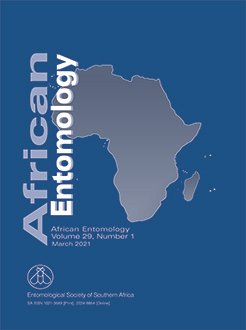Virgin queens of the honey bee Apis mellifera L. were assessed following feeding in fourth larval instar with a sublethal dose of bacterium Paenibacillus larvae larvae (LD20 = 1.07 × 102 colony forming units (CFU)/queen), the causative agent of American foulbrood disease (AFB). The extraction of ovary proteins showed a highly significant increase for treated queens. The bacterium P. l. larvae was detected by conventional PCR-technique within treated queens ovaries with molecular size of 550 bp. Vitellogenin gene has been expressed in healthy and treated queens using RT-PCR technique, up-regulation took place in treated queens, vitellogenin was found with a high level of gene expression (∼20-fold). Finally, this study could contribute to initial efforts to help attempts to breed honey bee queens that are resistant to the pathogen.
BioOne.org will be down briefly for maintenance on 17 December 2024 between 18:00-22:00 Pacific Time US. We apologize for any inconvenience.
How to translate text using browser tools
23 March 2021
Effect of the Bacterium Paenibacillus larvae larvae on Vitellogenin Gene Expression of the Queen Honey Bee Apis mellifera L.
S.A.S. Gomaa,
E.M.S. Barakat,
M.S. Salama,
E.E. El-Gohary
ACCESS THE FULL ARTICLE
It is not available for individual sale.
This article is only available to subscribers.
It is not available for individual sale.
It is not available for individual sale.

African Entomology
Vol. 29 • No. 1
March 2021
Vol. 29 • No. 1
March 2021
American foul brood
Apis mellifera queen
Paenibacillus larvae larvae
Protein
RT-PCR
vitellogenin





